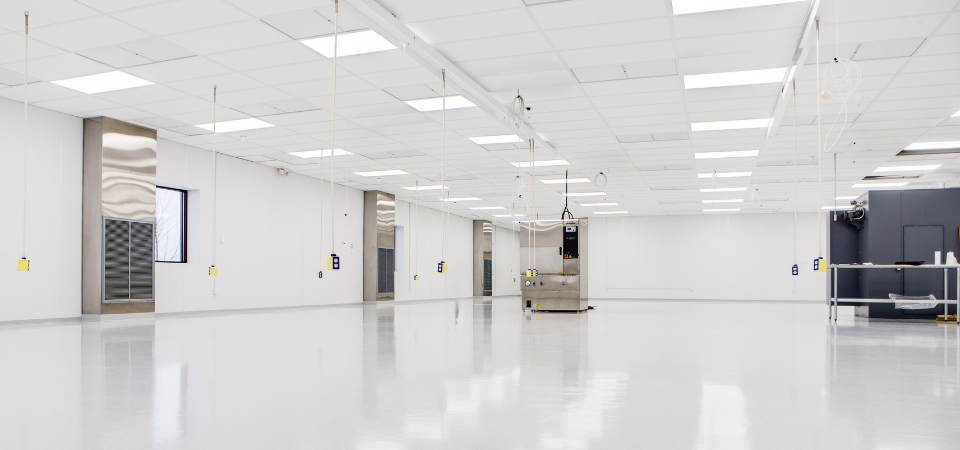QUESTION:
Do temperature and humidity requirements affect the way a cleanroom is designed?
Answered By: Tim Loughran
If you’re going to build a cleanroom that needs to maintain a specific temperature requirement, but the outside environment around it is at a higher temperature (for example if you’re putting a cleanroom in an open warehouse that has no temperature or humidity control), the cleanroom envelope has to withstand the difference. So you need an R-value in the wall to ensure the heat doesn’t transfer through. You also need a structure that will stop moisture from transferring.
Temperature is one consideration, because temperature moves with air. So if you have a positive pressure, you will push air out. But moisture is different. It will come into a cleanroom against pressurization (it will equalize against pressurization) and that causes a need for an environment that is extremely tight.
One if the biggest problems you have with cleanrooms is losing temperature in places you don’t expect to lose temperature. One example is the plenum cap, or the top of the cleanroom. You’re moving air at such a pace, what happens is that everything (including heat transfer) is accentuated. As you move air across the top of that plenum, if it is warm on one side and cooler on the other, the air will transfer through (or you will absorb heat). As a result you won’t realize that you are having trouble maintaining that temperature requirement in your cleanroom because you’re using a lot of the energy to cool a plenum, because it hasn’t been properly insulated.
See our next video regarding plenum cap insulation.


